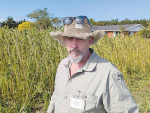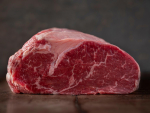Regulation Minister David Seymour says red tape stops farmers and growers from getting access to products that have been approved by other OECD countries.
“It can take nine years and wrangling government agencies to get approval here,” says Seymour.
“Farmers overseas are using innovative technologies that we don’t have access to that make animals emit less methane, make fruit and vegetable plants grow faster, and control pests and diseases with less environmental harm.
“If we don’t remove these barriers to productivity, we will fall behind our global competitors when we need to grow the economy through trade.”
The review will be welcomed by companies like Royal DSM, which produces Bovaer a feed additive that enables farmers to achieve a significant and immediate reduction of the environmental footprint of meat, milk, and dairy products. DSM claims that on average, it reduces enteric methane emissions by 30% from dairy cows and 45% from beef cattle.
The company expects that by the end of this calendar year 17 out of the top 20 global dairy companies will have the ability to use Bovaer in their home markets if they choose to do so. Unfortunately, Fonterra are likely not one of those 17, it says.
DSM applied for approval of 3-NOP (the active ingredient in Bovaer) in February 2021, to the Environmental Protection Authority. In August 2023, the EPA approved DSM’s application to import and manufacture 3-NOP. MPI is responsible for the next step — assessing the substance before it can be used on farms. They have yet to receive an application from DSM.
According to EPA, Bovaer is a trade name product with a specific composition that we have not assessed for on farm use. The concentrations of 3-NOP approved by the EPA are restricted for use in manufacturing facilities only, they are not end-use products (for use on farm or by farmers) as that wasn’t part of DSM’s application.
It says MPI is responsible for assessing efficacy, animal welfare, the potential for residues in food, and risks to trade in primary produce.
"The EPA is working closely with MPI on the regulation of methane (and nitrogen) inhibitors, with the aim of streamlining the EPA’s application and assessment process for these substances."
In 2021, Fonterra joined DSM to trial the product on some farms in NZ to determine how Bovaer would work on farms where cows are predominantly fed grass.
Last month the US Food and Drug Administration (FDA) completed its comprehensive, multi-year review of Bovaer and determined the product meets safety and requirements for use in dairy cattle.
Biosecurity Minister and dairy farmer Andrew Hoggard says New Zealand’s farming and food safety reputation underpins the sector’s export success.
“We need access to new technologies and products to keep ahead of the game. Our primary sector will contribute $54.6 billion in export revenue this year. That’s about 80 per cent of all merchandise exports,” Hoggard says.
The Ministry for Regulation is developing terms of reference and timetable for the review.











